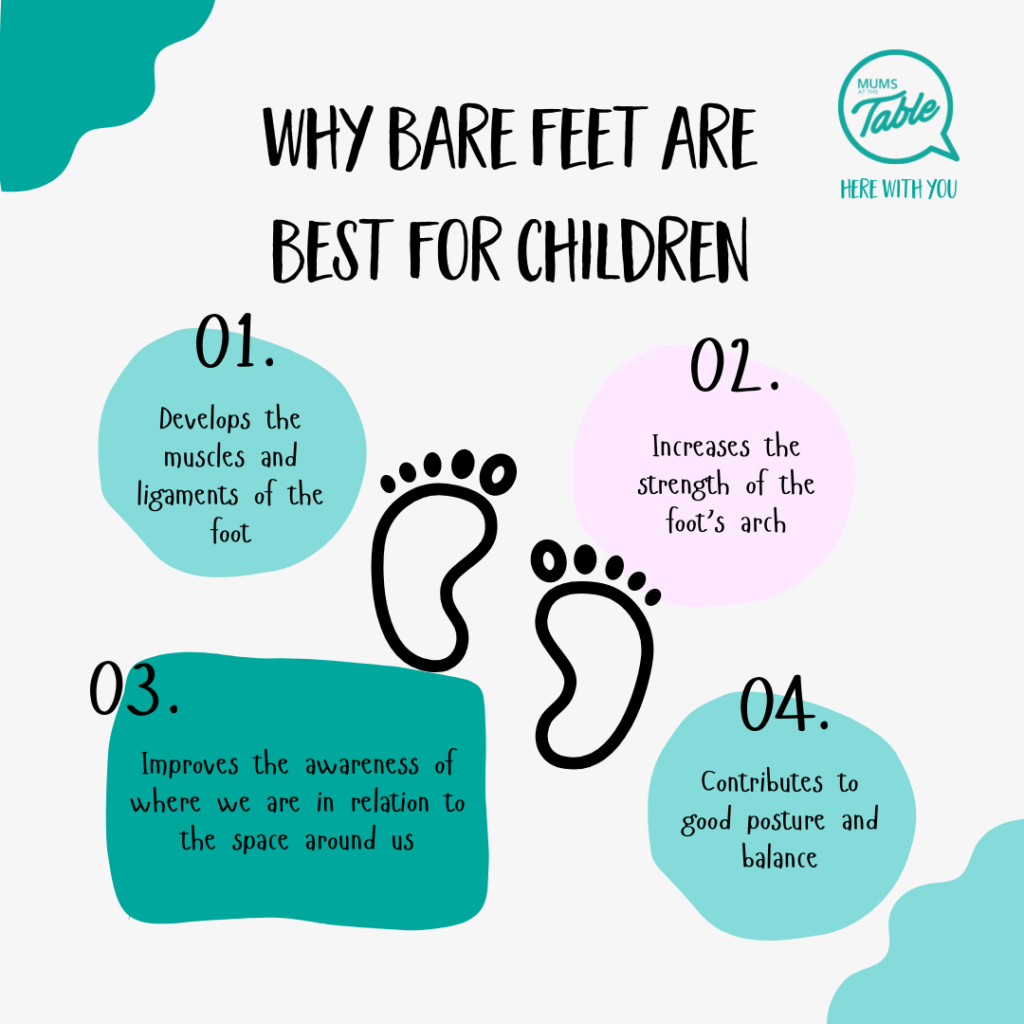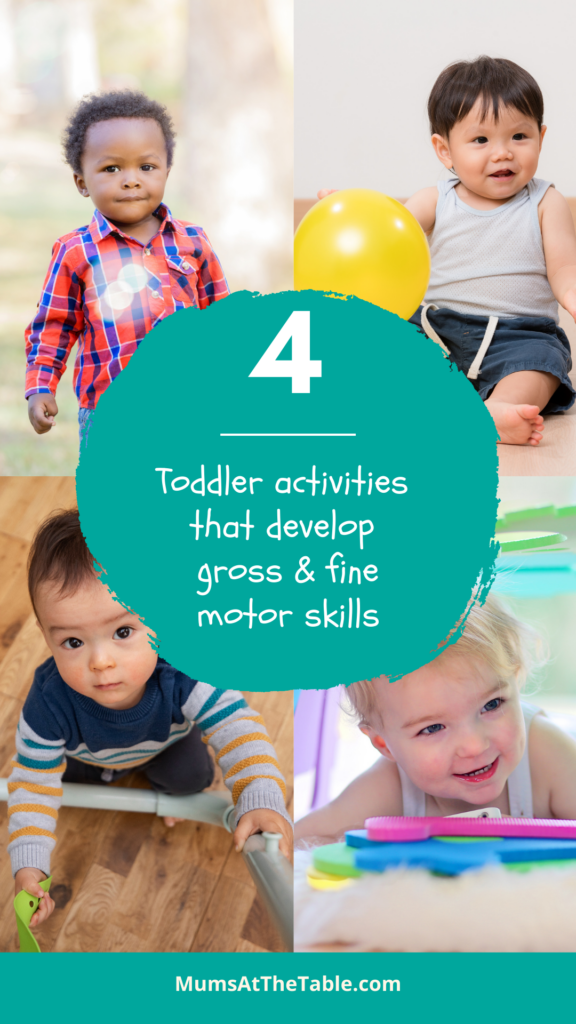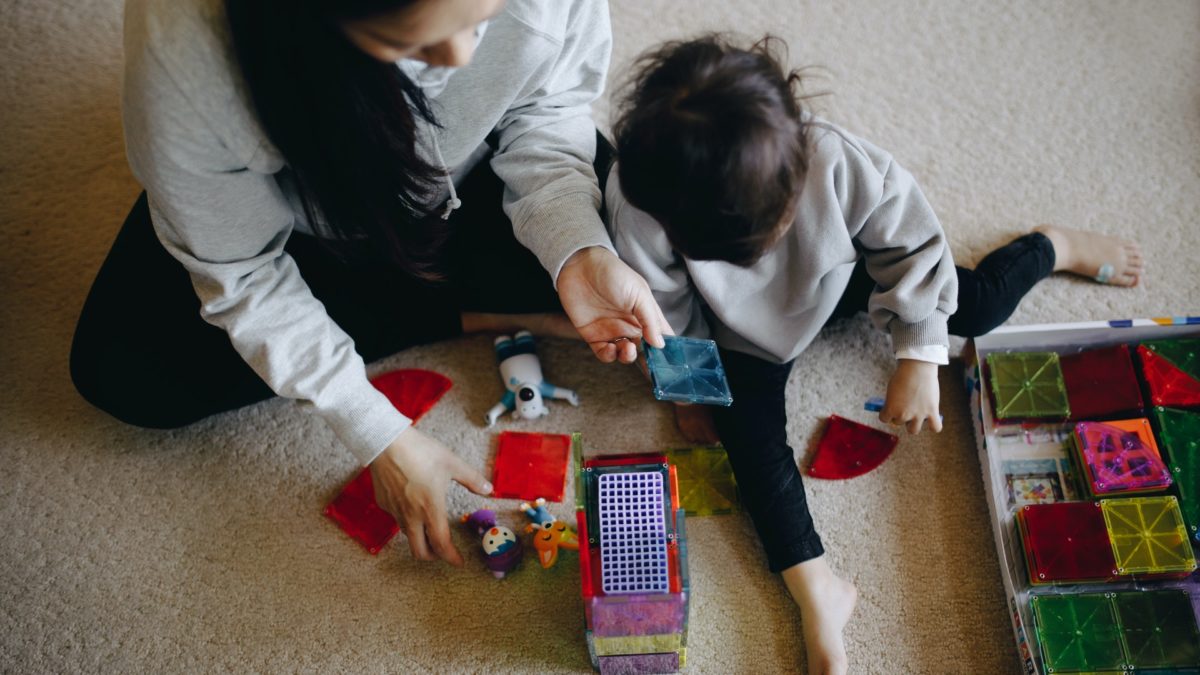We all know that play is hugely important for children as it helps with their development. Here are 12 different activities for kids (toddlers and preschoolers) that you can try at home, that will help them develop to their full potential.
Toddler development from walking to three years of age
Once walking, toddlers need to learn to balance, upright against gravity, and this takes a lot of time and practice. The balance receptors in the inner ear (vestibular system) are working hard to help this happen. Lots of rolling and tumbling, walking up and down slopes and lifting one foot to step up a curb or over an object on the floor without falling over, is needed. They love swings, to be gently spun and to be bounced on a trampoline, and this all helps the balance receptors mature.
In the video below, paediatrician Dr David Hartshorn discusses what to look out for in a child’s development.
Children in this age group are fully focused on moving and exploring. They also have a fierce reputation for their doggedness and determination! The genetic programming of the brain drives it to seek out the types of experiences and opportunities that best support its development, and much of this revolves around active movement, such as running, climbing and jumping and, by the end of this year, starting to ride three-wheeled scooters and trikes. They are pretty much “on the go” for every waking moment!
Why bare feet are best for children

Specialists working in the area of foot development and health attest to the benefits of bare feet for all ages. Crawling, walking, running, climbing, jumping and pushing along in bare feet develops the muscles and ligaments of the foot, increases the strength of the foot’s arch, improves the awareness of where we are in relation to the space around us (known as proprioception) and contributes to good posture and balance. Bare feet play a key role in maximising both static (standing still) and active (moving) balance in people of all ages.
Dr Alain Berthoz, a neuro-physician who specialises in the study of the balance mechanisms in the brain, tells us that a child’s first ability to control balance upright against gravity develops, in conjunction with the vestibular system, through the feet. The toddler’s wide-legged balancing act is guided by “eyes in their feet”, so when toddlers wear shoes it’s like they have eye shades on. The sense of touch is dampened and the messages to the brain are diminished. This is because the sense of feeling gained through bare feet on a surface provides a relatively stable platform from which the brain can determine where the body is in relation to the ground.
Once head control is fully stabilised at about 18 to 24 months then the eyes take over from the feet and, again in combination with the balance system, feed the brain information about body position in relation to the horizon. In this way your child can maintain a stable head that automatically adjusts its position in response to their posture. Bare feet in infancy and early childhood also play a very important early role in helping our youngsters learn to navigate their bodies through a space and to organise patterns of movement that are appropriate to any given situation. It even helps in the development of memory.
Activities for kids (walking to three years of age)
Toddlers need lots of opportunities to develop good balance so that later motor skills have a solid foundation on which to function. Activities for kids this age should focus on teaching them to bob, jump, run and generally get their upright balance more refined.
1. Go for daily walks
Encourage your toddler to balance along edges, planks, stepping stones and the like, and to run up and down grassy slopes. Balance is refined through repeated movement practice, and good balance is essential for automatic control of the body. Walking after rain is particularly fun for your toddler. They love stomping in, jumping in and running through puddles!
2. Build a climbing/crawling circuit indoors from everyday household furniture
Crawl under the table, place a blanket over a row of chairs and crawl through the tunnel, climb over the lounge, jump on the bed, jump off the lounge onto cushions on the floor, etc. Make sure packing away at the end is part of the game!
3. Find different surfaces for your barefooted grandchild to walk, stamp, jump and run on
Carpet, tiles, wood, grass, cement, stones, water, sand, gravel, bricks, wet seaweed, mud, etc.
4. To help eye muscle movement and strength
- Encourage hand–eye coordination activities: throwing beanbags, hitting balloons.
- Verbalise activities: “Can you see the red ball? Pick up the red ball please.”
- Play games where they track swinging objects or hit swinging objects. Balloons with fly swats are perfect for this! Toddlers should begin to move their eyes without moving their head.
Want more? Fun activities at home with kids

Preschooler development from three to five years of age
The first three years is about getting the right message pathways set up for emotional, social and learning readiness. Movement and sensory experiences in the years from ages three to five transform these pathways into message superhighways that are required for academic success. No matter the place, time or generation, three-year-olds exhibit an enthusiastic desire to play and learn about the world around them.
Research has shown that involving children in physical movement and musical activities at an early age greatly improves the training of memory and later academic learning. Engaging children in puzzles, classification and visual reasoning, and thinking skill games has positive influences on training memory. Children with better working memories experience a better ability to focus and resist distractions. Memory is not just one of the many intellectual skills, it is one of the most important, because it directly affects every other intellectual process.
Activities for kids (three to five years of age)

Encourage lots of crossing under the overhead ladder/monkey bars, running, jumping, hopping, marching, skipping, scooter and bicycle riding as well as throwing and catching. These activities for kids this age helps them gain motor skills, which promote the development of midline crossing, cross-pattern movements and development of a dominant side—all essential for successful academic learning.
1. Get them wheels (two or three)
Kids in this age group are active and need to be! Their brain is demanding almost continual motor experiences—some more than others. Three-wheeled scooters, trikes and bikes (with or without training wheels depending on their level of motor skill development and balance) are excellent at engaging activity and developing balance, coordination and space awareness.
2. Indoor circuit play
Make inside play a challenge for your preschooler—ask them to think about and help set up a circuit challenge. What can they use? How can they move through/over/under a piece of furniture in different ways? Can they set up the circuit differently? This links movement with thinking, which is essential for learning.
3. Practise animal walks around the house
Animal walks are great for motor skill development, strength and using the two sides of the body in opposition to each other. They can be used to visualise (see in their mind’s eye what something looks like). “How do you think a bear, dog, rabbit, elephant, seal, duck, frog would walk? Can you show me?”
4. Play barefoot games
Pick up marbles with your toes . . . and if your child can achieve that, then drop them in a small container. Fold a scarf with toes instead of fingers. Let them ride their trike, bike or scooter barefooted.
5. Play memory games
- What’s missing from the tray? Have four different items on a tray. Let your child look at the items, then get them to turn their back while you remove something. They then guess which item is missing. If your child finds this hard with four items, try three. If it’s too easy, add more items, or take away two items instead of one.
- Pairs played with picture cards. Have a set of four matching pairs of cards. Turn them over so the pictures face down. Take it in turns to turn over two cards. If they match you have a pair; put them to one side and choose two more cards. If they don’t match, the next player has a turn. The idea is to try to remember where the matching picture card was. As your child becomes more able to remember, increase the number of paired cards.
6. Practise hand–eye coordination with eyes on the task
Post beanbags into a hole cut in a cardboard box, roll balls down a chute, place pegs in a hole. Use hands and eyes together in a coordinated manner—practise throwing at a target.
7. Play visual games
- Visual memory tasks: What’s missing?
- Visual discrimination tasks: Can you find a shape like this, or a colour like this?
- Visual sequencing: Can you first jump on the toy fish, then jump on the toy rabbit?; Mirror my action; Copy a series of actions
- Near/far activities. Look at the picture on the far wall, then focus on the picture in the book you are reading.
8. Hand and finger plays
These are great to practise the control of each hand, to learn left and right and to manipulate each finger individually. These are all important skills for pencil grip and pencil control.
Also: 5 easy kids activities to do at home

This is an extract from Grandparenting Grandchildren. Available from exislepublishing.com and wherever inspiring books are sold.
How helpful was this article?
Click on a star to rate it!
5 / 5. 3
Be the first to rate this post!
Dr Jane Williams & Dr Tessa Grigg
Related posts
Subscribe
Receive personalised articles from experts and wellness inspiration weekly!

